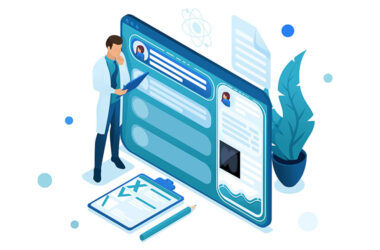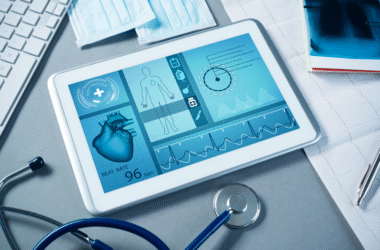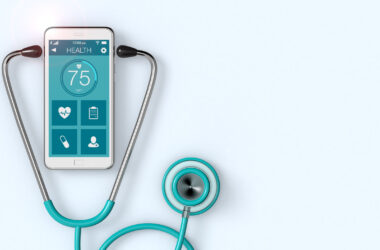It has never been the same everywhere as far as access to healthcare is concerned. In large cities, hospitals are very close, doctors are quite accessible, and a wide range of choice is provided. Still, in the country, it is not the case. Not all the people are close to the clinics; they have to wait more time before getting assistance and encounter more difficulties in ensuring good health. This is gradually being transformed by digital healthcare. Through phones, applications, and internet visits, a wider population in the rural areas would be able to obtain assistance when required.
Rural Areas Have Fewer Health Resources
Individuals in rural locations can usually experience difficulty in obtaining care. Rural American is also portrayed to have less doctors population per 100,000 persons as presented by a report by the National Rural Health Association. Indeed, more than 60 percent of the regions with a shortage of health workers in the US are located in the rural locations.
The vast majority of small towns entail minimal medical facilities. There is no hospital, or full time doctor, in the many. What this implies is that an individual may be forced to spend hours to access basic services. Things are worsened by bad roads, absence of transport and poverty. Such issues result in delay, and this may result in serious illness.
Technology Is Filling the Gap
Digital healthcare uses tools like mobile apps, video calls, and remote devices. These tools help connect patients with doctors without the need to travel. One big change is telehealth. Through video calls, patients in small towns can speak with doctors, get advice, and even receive treatment.
According to the CDC, the number of telehealth visits in the US increased by over 154 percent during the first few months of the COVID-19 pandemic. While the reason was the virus, this change opened the door for long-term use in rural areas.
Virtual Care Makes Doctor Visits Easier
One of the biggest problems in rural areas is distance. If someone has to travel two hours for a check-up, they might skip it. But with a phone or a tablet, that same check-up can happen from home. Many people in rural places now use video calls for check-ups, mental health care, and follow-ups after surgery.
Also, nurses and health coaches can check on patients through these calls. This reduces missed visits and helps people manage their health better. The American Hospital Association reports that more than 75 percent of hospitals in the US now use some form of telehealth.
Remote Devices Help Monitor Patients at Home

People with long-term health problems like diabetes or heart disease often need regular monitoring. But regular doctor visits are hard in rural areas. Digital tools like smart blood pressure cuffs, glucose meters, and heart monitors send data straight to doctors.
These tools alert nurses or doctors when something is wrong, even before the patient feels it. That means fewer hospital visits and faster help. This system is called Remote Patient Monitoring (RPM). According to a study by the National Institutes of Health, RPM led to fewer hospital visits by 25 percent in rural patients with heart failure.
Mental Health Care Is Now Closer
In many small towns, mental health services are missing. People may not have a therapist nearby, and even if they do, some feel ashamed to go. Online therapy and phone-based mental health programs have helped solve this.
Many now receive help through private video calls. Text-based counseling apps also help teens and adults speak with trained experts. The use of online mental health care grew fast during the pandemic and still helps thousands who live far from in-person care.
Health Apps Help With Daily Habits
There are hundreds of apps that help people track their health. Some help with exercise, diet, or sleep. Others remind patients to take medicine. These tools are simple but useful. For example, a patient with diabetes can enter their sugar levels daily, and the app can show trends or warn when things are not normal.
While apps don’t replace doctors, they help people stay on track. They also give rural patients a way to stay involved in their care without needing to travel.
Challenges Still Remain
Even with all these tools, not everything is perfect. Some rural homes don’t have good internet or smartphones. Older adults may not know how to use apps or video calls. There are also language and cultural issues in some areas.
But many groups are working to solve this. The Federal Communications Commission has started programs to bring faster internet to rural areas. Local health workers and clinics now teach patients how to use basic health tools and offer help in many languages.
Community Health Workers Play a Key Role
In rural areas, local health workers understand the people they serve. These workers now use digital tools to report patient issues to doctors quickly. They also help set up video calls and explain how to use health apps.
They act as a bridge between new technology and local people. With their help, more patients can use digital health tools the right way. This is very useful in areas where older patients or those with low education may feel confused by new systems.
Cost Is a Concern, But Progress Is Being Made
Some digital health services cost money, and many rural patients worry about paying for them. However, changes in insurance plans now cover many of these services. Medicare, for example, pays for most telehealth visits. Many state Medicaid plans also cover remote care now.
This has made digital health more reachable. According to the Centers for Medicare and Medicaid Services, over 23 million people used telehealth services under Medicare in 2021 alone.
Final Thoughts
Digital healthcare cannot solve every health problem in rural areas, but it is helping. People can now speak with doctors, track their health, and get advice without long travel. Tools like telehealth, health apps, and remote devices bring care closer. While internet access, cost, and education are still issues, progress is being made.
Top of Form
Bottom of Form






